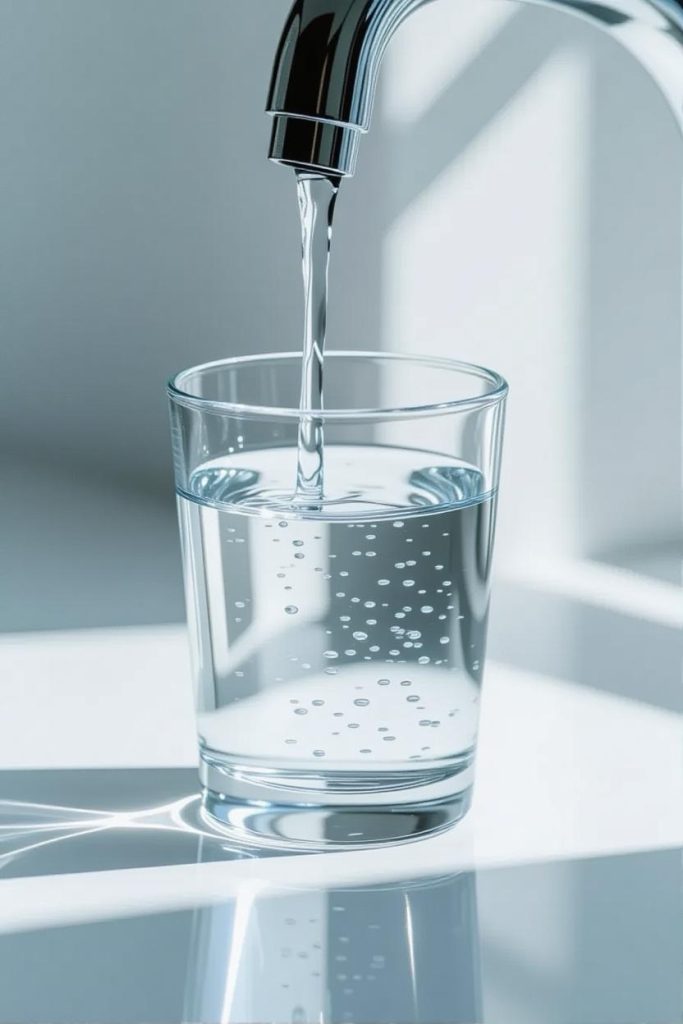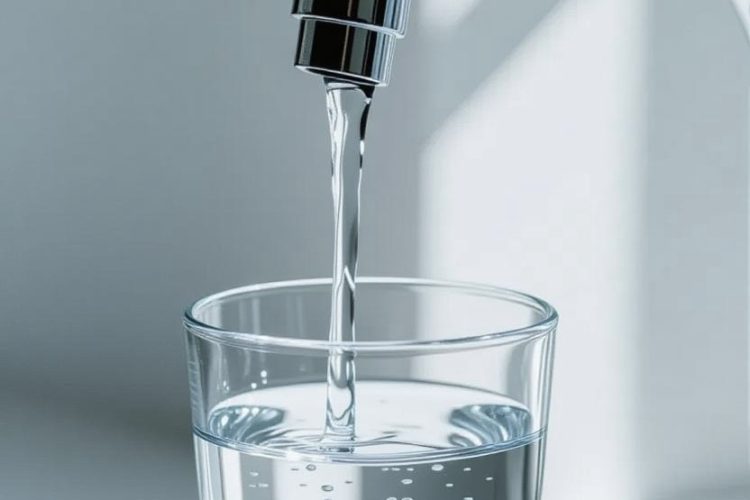Most home water filters struggle to remove tough contaminants like PFAS (forever chemicals), heavy metals (lead, mercury, arsenic), and pharmaceuticals from tap water. These pollutants, from industrial runoff, aging pipes, or wastewater, pose health risks like cancer, developmental issues, and hormonal imbalances. Basic pitcher or faucet filters handle chlorine and sediments but fail against PFAS and metals. Advanced systems like reverse osmosis, activated carbon with ion exchange, or specialized PFAS filters remove up to 99% of these threats. Reverse osmosis excels for point-of-use setups, while whole-house systems tackle broader issues. Certifications ensure performance for health and aesthetic effects. Regular filter changes (6-12 months) and water testing maintain clean, safe drinking water, protecting your household from harmful contaminants.
Long Version
Navigating Home Water Filtration: Effectively Removing Tough Contaminants from Your Drinking Water
In an era where water quality concerns dominate headlines, many households rely on basic water filters to ensure clean water from their taps. However, most home filtration systems fall short when it comes to eliminating persistent pollutants like PFAS, heavy metals, and pharmaceuticals from tap water and municipal water supplies. These emerging contaminants, often stemming from wastewater effluents and environmental concerns, pose significant health risks that demand advanced water treatment solutions. This article delves into the intricacies of water purification, exploring why standard filters often fail and how technologies such as reverse osmosis, activated carbon with ion exchange, and specialized PFAS filters can provide superior contaminant reduction.
Understanding Common Contaminants in Tap Water
Tap water, while regulated, frequently contains a mix of pollutants that evade basic filtration. PFAS, or per- and polyfluoroalkyl substances—commonly dubbed forever chemicals due to their persistence in the environment—include specific compounds like PFOA (perfluorooctanoic acid) and PFOS (perfluorooctanesulfonic acid). These substances originate from industrial sources, firefighting foams, and consumer products, infiltrating drinking water through groundwater and surface runoff. Heavy metals such as lead, mercury, and arsenic leach from aging pipes, mining activities, or natural deposits, accumulating in water supplies and contributing to long-term health effects. Pharmaceuticals, including trace pharmaceuticals and microconstituents like antibiotics and hormones, enter waterways via human excretion and improper disposal, persisting as incidental contaminants in treated municipal water.
Other prevalent threats include endocrine-disrupting chemicals, which mimic hormones and disrupt bodily functions; volatile organic compounds (VOCs) from solvents and fuels; microplastics from plastic degradation; BPA (bisphenol-A) from plastics; pesticides and herbicides from agricultural runoff; fluoride added for dental health but excessive in some areas; asbestos from deteriorating pipes; chlorine and chloramine used as disinfectants but imparting off-tastes; hydrogen sulfide causing rotten-egg odors; sediments that cloud water; and biological agents like cysts and bacteria. These elements highlight the complexity of pollutant removal in home settings, where basic water filters often address only aesthetic effects like taste and odor, leaving health-impacting contaminants behind.
Health Risks and Environmental Concerns
Exposure to these contaminants carries profound health effects. PFAS have been linked to increased risks of kidney and testicular cancer, thyroid disease, decreased vaccine response, and developmental issues in children, with estimates suggesting they contribute to thousands of annual cancer cases. Heavy metals like lead can impair cognitive development, especially in children, while mercury affects the nervous system and arsenic is associated with skin lesions and cardiovascular disease. Pharmaceuticals and endocrine-disrupting chemicals may lead to reproductive issues, antibiotic resistance, and hormonal imbalances. Even low-level exposure to VOCs, pesticides, herbicides, and microplastics can cause neurological problems, liver damage, and bioaccumulation in the body.
Environmentally, these pollutants exacerbate concerns by persisting in wastewater and ecosystems, affecting wildlife and cycling back into human water sources. Regulations set maximum contaminant levels (MCL) for many, such as low parts per trillion for PFOA and PFOS, underscoring the urgency for effective home filtration to mitigate both personal health risks and broader ecological impacts.
Limitations of Basic Water Filters
Common pitcher filters and faucet-mounted filters excel at removing chlorine, sediments, and some bacteria through simple micron filtration, but they struggle with forever chemicals, heavy metals, and pharmaceuticals. For instance, standard activated carbon in these systems uses adsorption to trap larger molecules, yet it often fails to bind tightly to PFAS or dissolve metals bound by ionic bonds. Aesthetic effects like improved taste from reducing chloramine or hydrogen sulfide are achievable, but contaminant reduction for health effects remains inadequate, with removal rates sometimes as low as 60-70% for certain PFAS in basic setups. This gap necessitates advanced systems for comprehensive water treatment.
Advanced Filtration Systems for Effective Removal
To tackle tough contaminants, reverse osmosis stands out as a powerhouse technology. It forces water through a semi-permeable membrane under pressure, rejecting up to 99% of dissolved solids, including PFAS, heavy metals, VOCs, pesticides, herbicides, fluoride, asbestos, cysts, and bacteria. However, it produces wastewater, making it ideal for point-of-use (POU) applications like under-sink models rather than whole house filtration.
Activated carbon, particularly granular activated carbon or carbon block filters made from coconut shell activated carbon, excels at adsorption of organic compounds like pharmaceuticals, chlorine, chloramine, and some PFAS. When combined with ion exchange, which swaps harmful ions like those in heavy metals (lead, mercury, arsenic) for benign ones, the system achieves broader pollutant removal. KDF (kinetic degradation fluxion) media enhances this by reducing chlorine and heavy metals through redox reactions.
Specialized PFAS filters often integrate these with nanofiltration or advanced oxidation processes like ozonation, which breaks down forever chemicals and emerging contaminants. For pharmaceutical filtration, multi-stage systems incorporating ion exchange and activated carbon can reduce trace pharmaceuticals and microconstituents by up to 98%. Technologies like electro-deionization further refine water by removing ions without chemicals.
Types of Home Filtration Systems
Selecting the right setup depends on needs. POU filters, such as under-sink models, target drinking water directly, offering high contaminant reduction for specific taps. Whole house filtration treats all incoming water, addressing sediments, hydrogen sulfide, and broader pollutants but requiring more maintenance. Hybrid approaches, like combining reverse osmosis with pre-filters, optimize efficiency.
Certifications and Regulations Ensuring Reliability
Filter certification is crucial for verifying performance. Standards cover aesthetic effects like chlorine reduction; health effects, including heavy metals, VOCs, and cysts; reverse osmosis systems for TDS and PFAS; emerging contaminants like pharmaceuticals and BPA; and specific PFAS reduction to below low parts per trillion. Always seek products meeting regulations and MCL standards to ensure reliable water quality.
Choosing and Maintaining Your System for Long-Term Efficacy
When choosing, consider filter longevity—PFAS don’t clog filters but accumulate, necessitating regular swaps every 6-12 months based on usage. Evaluate mechanisms like adsorption for organics, ionic bonds in ion exchange for metals, and micron filtration for particulates. For wastewater concerns in reverse osmosis, high-efficiency models minimize waste. Routine testing of your water source informs the best fit, turning your home into a bastion of clean water.
By integrating these advanced water filtration strategies, you can significantly mitigate risks from contaminants, fostering healthier living through informed water purification choices.

Hashtags For Social Media
#waterfilter #cleanwater #pfasfree #foreverchemicals #healthyhome #safedrinkingwater #waterpurification #reverseosmosis #activatedcarbon #toxinfree #ecohealth #waterquality #purewater #hydration #greentech #environmentalhealth #cleandrinkingwater #sustainableliving #homewellness #filteryourwater #heavymetals #leadfree #healthyfamily #cleanliving #watercontamination #reducepfas #wellnesshome #watertreatment #healthywater #cleanwatermovement
Related Questions, Words, Phrases
what is the best water filter for pfas | do water filters remove forever chemicals | which home filter removes lead and heavy metals | how to remove pfas from tap water | can reverse osmosis remove pfas | what filter removes pharmaceuticals from water | best whole house filter for toxic contaminants | does brita remove pfas and lead | how to make drinking water safe from pfas | what’s the safest water filter for home use | difference between carbon and reverse osmosis filters | how to know if your water has pfas | what contaminants are in tap water | are pfas dangerous to health | how often should i change my water filter | does activated carbon remove pfas | how to test water for pfas and metals | which filter removes arsenic and mercury | can pfas be filtered out naturally | best water purification system for home | what’s the most effective way to remove pfas | do refrigerator filters remove heavy metals | how to choose a water filter for my area | are reverse osmosis filters worth it | what kind of filter removes forever chemicals | why regular filters don’t remove pfas | how does ion exchange remove contaminants | do water filters remove chlorine and lead | what’s the best under sink filter for pfas | does boiling water remove pfas | how to protect my family from toxic water | do any faucet filters remove pfas | what certifications should a water filter have | how to know if my filter removes pfas | best way to get clean safe drinking water






